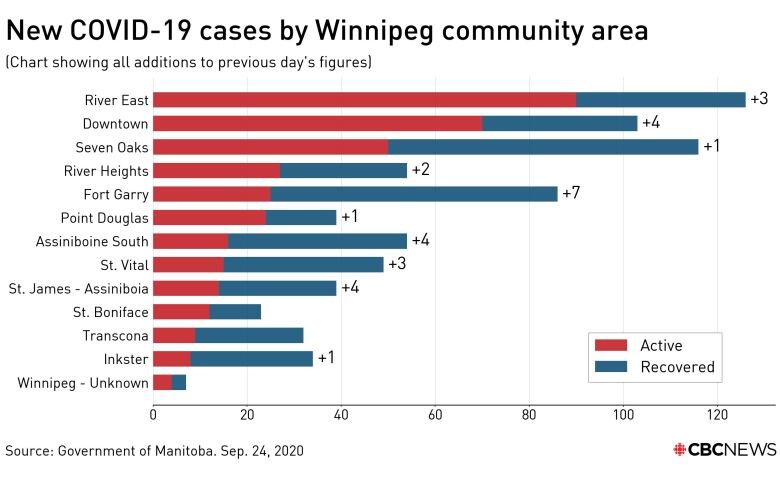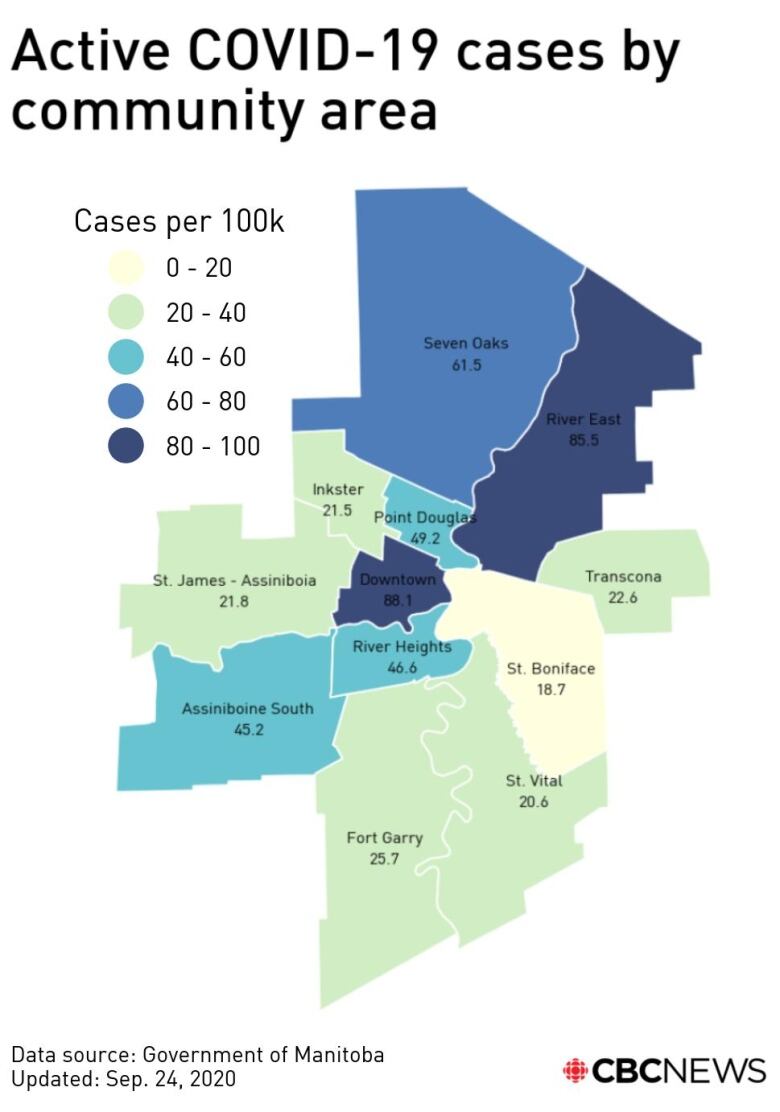Clamping down: Manitoba's top doc and the impending Winnipeg decision
Some of the indicators that warrant a Winnipeg pandemic response upgrade are already here

From a vantage point in Brandon, Dauphin or Neepawa, Winnipeggersmay look like people in denial.
When COVID-19 cases spiked across southwestern Manitoba, the province elevated the entire Prairie Mountain health region to orange on the pandemic response system.
Over the space of a weekend in August, people across the Westman region learned to put on masks in public places and not complain too much about it, notwithstanding a headline-grabbingtemper tantrum in a BrandonFreshii franchise.
Stoic folks from Souris to Swan River abided by a directive to gather in groups no larger than 10 people, which is no fun whatsoever during a brief Manitoban summer.
These minor sacrifices paid dividends quickly and dramatically. In a matter of weeks, COVID-19 cases plummeted all along the upper Assiniboine River Valley, allowingManitoba's chief public health officer to downgrade Prairie Mountain's pandemic risk rating.
Now, when people in Minnedosa or Melita look to the east at Winnipeg, they would be justified in wondering what the heck is going on in the supposedly more sophisticated provincial capital, where a number of pandemic indicators are proving problematic to public health officials.

For starters, COVID-19 cases in the Winnipeg health region have erupted so rapidly in recent weeks, the Manitoba capital now accounts for four in every five active cases of the disease in the province.
The five-day test-positivity rate in Winnipeg is now above the three-per-cent mark Dr. Brent Roussin once identified as an important threshold for deciding whether to bring back some pandemic restrictions.
And just like one month ago in Prairie Mountain, where people were flouting the recommendation against large gatherings,Winnipeg is now home to well-documented cases of poor pandemic etiquette involving symptomatic bar-hopping young adults.
Things are getting bad enough that Dr. Roussinis recommending Winnipeggers not gather for any reason, let alone Thanksgiving.
"When we see the trajectory that we're seeing, especially in Winnipeg, this is really a time when people shouldn't be planning large family gatherings or any type of gatherings," Roussin said during a pandemic briefing on Thursday.
To that end, he said in the strongest language yet that he's considering upgrading Winnipeg to orange.
"We definitely are contemplating an approach in Winnipeg," he said, suggesting he hasn't decided to flip the switch just yet in case some antisocial elements within the city suddenly start caring about other people.
"I don't like to use the term 'inevitable.' I mean, the trend here has been going up for quite some time. Ifwe look at it, it's unlikely to reverse unless Manitobans step up, which we know they have. So we're sending out that messaging now."
Roussinseems to be afew exasperated days away from requiring Winnipeggers to wear masks in public, gather in smaller groups and maybe even stop kibbitzing in clubs.

It's not just western Manitobans who are wondering why he hasn't done it already. Winnipeggers may wonder as well, to the point whereRoussin'sability to make decisions independent of his political colleagues has become a subject of inquiry when Premier Brian Pallister is in the room.
When that happens, Pallister pours cold water on the idea he provides Roussinwith marching ordersbut also makes clear the politicians and public health experts try to develop something of a consensus behind closed doors.
"Dr. Roussin and I obviously talk regularly,as he does a call regularly with our cabinet and senior officials and we report mutually to one another," Pallister said Thursday.
"I can just say to you that we freely raise issues here, but we understand that ultimately the recommendations have to be formalized on the basis of public policy. The experts on health policy are the people that should be giving that advice."
In other words, it's just as naive to suggest the premier and PC cabinet ministers exert no influence over Roussin as it would be to suggest that they tell him what colour ties to wear to public-health briefings.
The creation of public policy is more like making sausage than baking cakes. Not all of the ingredients are tasty at the outset.
Roussin'spragmatism appears to have inspired fierce loyalty on Pallister's part.
"There's lots of Monday-morning quarterbacking, where you know better than the people on the field," Pallister said on Thursday, comparing Roussin to a football coach.
"When you're on a win streak, nobody questions the coach. They only start doing that when they figure that times are stressful and they show their stress. Sometimes these couch-potato types, they criticize the coach aftertwo losses in a row."
To take the analogy one step further, Winnipeg is in the midst of a losing streak. The premier should not be surprised when the fans scream loudly for Coach Roussinto pull something more dramatic out of hispandemic response playbook.
Corrections
- We initially reported that Winnipeg accounts for one in every nine active cases. In fact, the capital accounts for four in every five active cases in the province.Sep 25, 2020 7:12 AM CT












_(720p).jpg)


 OFFICIAL HD MUSIC VIDEO.jpg)
.jpg)



























































































